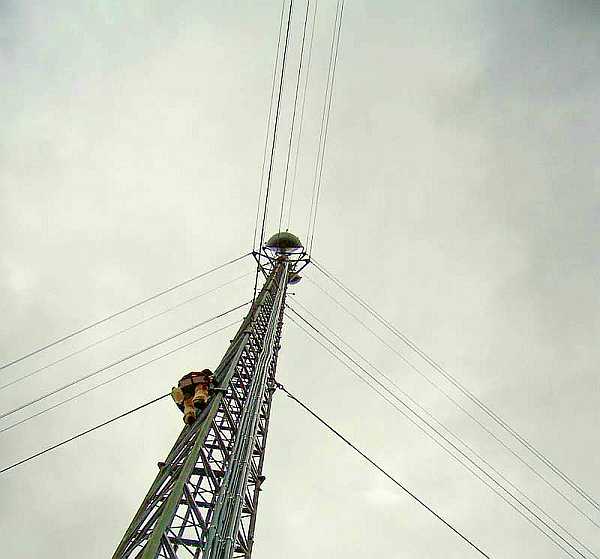guide
-

How to properly arrange mast guy wires?
Read more: How to properly arrange the mast guy wires?The general rule is that it is best to place the guy wires symmetrically – for three-kerb masts, every 120 degrees when viewed in the horizontal plane. As for the distance of the guy wire from the mast truss in the vertical plane – it is generally accepted that the distance of the anchor point cannot be less than half the height of the mast. For example, for a 50-meter mast, the anchoring mark…
-

How to install antennas on a mast safely for the structure?
Read more: How to install antennas on a mast in a safe way for the structure?A telecommunications mast, like any truss, has node points that are its strongest points. It is worth applying all forces precisely in the vicinity of the nodes, because this minimizes the risk of damage to the whole. This is important when installing additional guy lines, securing ropes during the erection of the mast using the rotation technique, or even when choosing anchor points for antenna booms. A node point is a place…
-

What is a separation crown used for?
Read more: What is a separation crown used for?The crown has two tasks, the first is due to the need to move apart the transmitting antennas, e.g. sector antennas. The antennas have reverse radiation which can lead to interference and disturbances. Since the strength of the electromagnetic field decreases with the square of the distance - even a small separation significantly weakens the interaction of the antennas. It is worth checking the specifications of the devices in order to determine the minimum antenna separation recommended by the manufacturer. The second task…
-

What to choose – mast or tower?
Read more: What to choose – mast or tower?The main difference between masts and towers is the ease of use and the amount of space required for their installation. There is also an economic aspect. In general, towers are more expensive, but they need much less space, while masts are cheaper, but the plot of land needed to accommodate the guy system must be much larger. Masts require periodic inspections, rope tension control, and in a critical situation they can…
Subscribe
Log in with your email address to receive our newsletter (quarterly)
Latest Questions and Answers
- Cooperation with SpaceForest
- Assembly for chemical anchors - description of the technique
- How to avoid frost cracks and their consequences?
- Optimization of the height of masts for the radio link.
- Stainless Steel – What Types?
Question Categories
- No categories (3)
- Prices (1)
- For architects (8)
- Stage Constructions (3)
- Materials science (6)
- Metallurgy (5)
- What's new in production (1)
- Law (4)
- Questions and Answers (20)
- Radio communication (4)
- Technologie (12)

